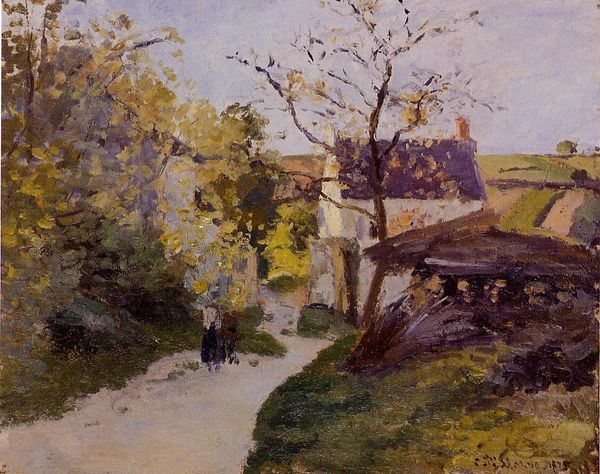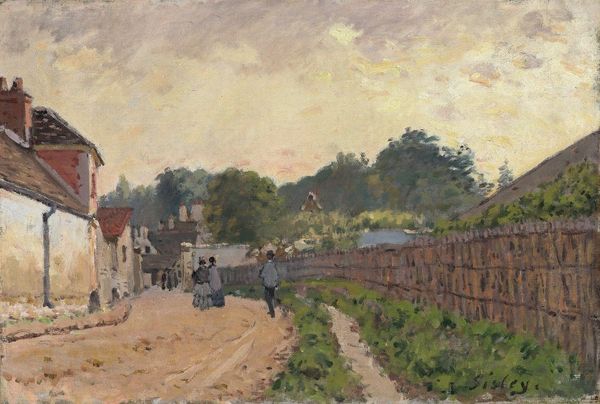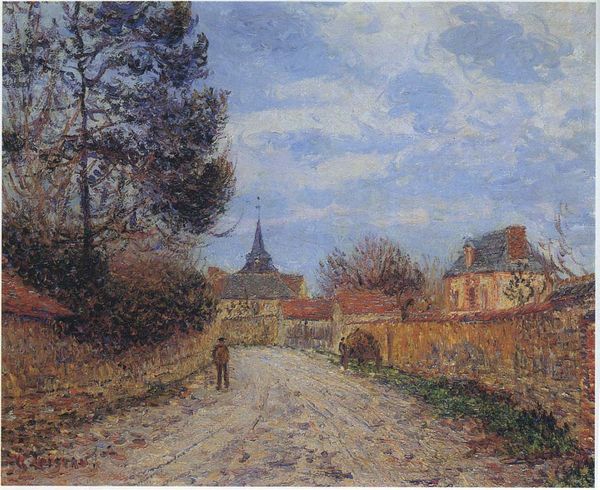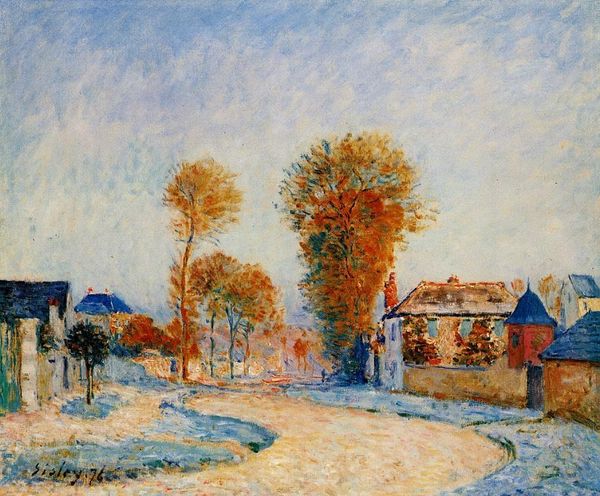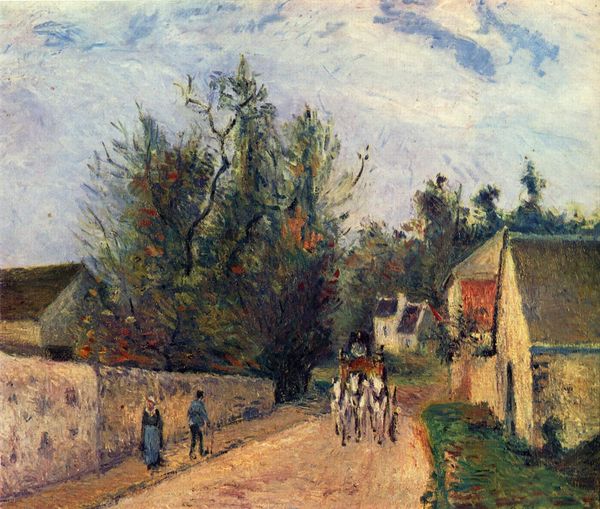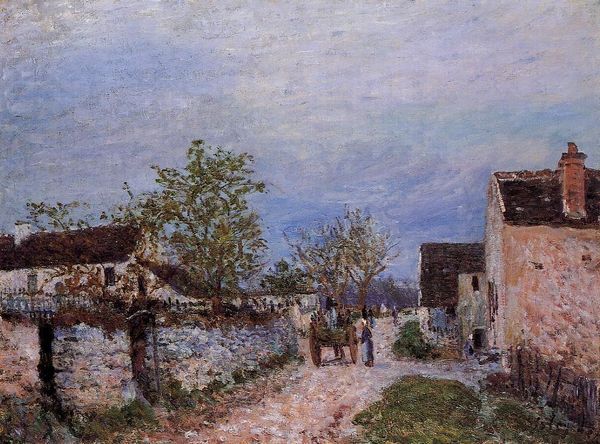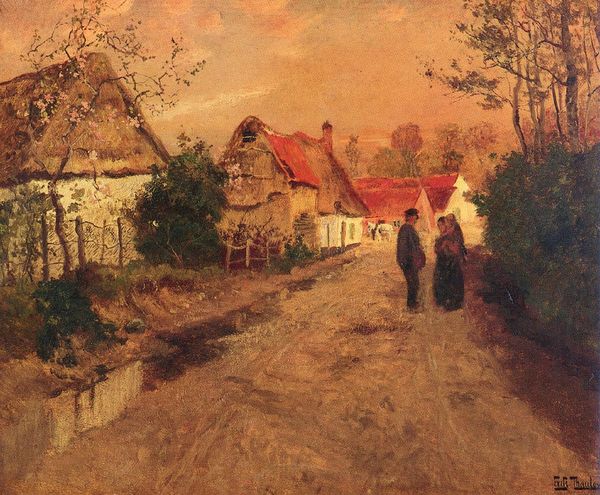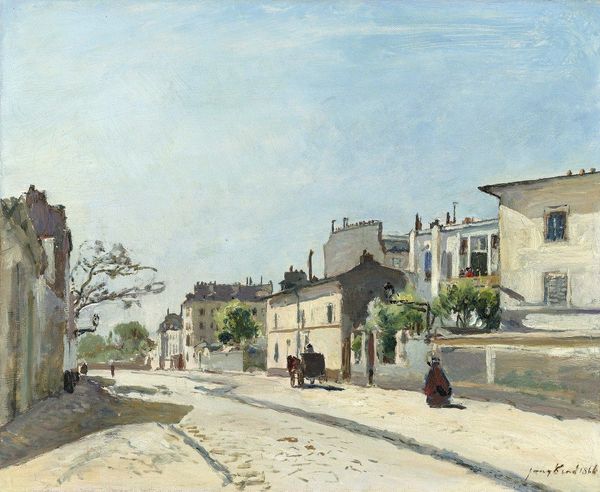
painting, plein-air, oil-paint
#
painting
#
impressionism
#
plein-air
#
oil-paint
#
landscape
#
oil painting
#
cityscape
#
genre-painting
Dimensions: 38 x 54 cm
Copyright: Public domain
Curator: Looking at this artwork, the subdued tones immediately strike me. It is called "Princesse Street in Louveciennes" completed by Alfred Sisley in 1872. Editor: It does evoke a somber calmness, doesn't it? The muted ochre and pale blues certainly convey that. I'm curious, why do you think Sisley chose this rather ordinary street? Curator: It's far from ordinary! In post-Franco-Prussian War France, the landscape held new political weight. Artists like Sisley, deeply impacted by the war and the loss of traditional exhibition spaces, found renewed interest in representing everyday life. Painting outdoors became an act of reclaiming and redefining French identity and, in this instance, perhaps processing loss. Editor: I see your point. Yet, observing Sisley's technique, it appears the broad strokes and the diffusion of light are more central than historical representation. Note the short brushstrokes that create a flickering surface, a technique that emphasizes the subjective experience of viewing. It looks like it’s not about the street itself, but how the light and atmosphere alter its appearance. Curator: True, his emphasis on the changing atmospheric conditions is classic Impressionism. Still, remember that these ‘impressions’ were shown primarily to other artists, critics, and patrons; people situated to understand how paintings shaped national self-perception. "Plein air" painting, in and of itself, became tied to a narrative of national regeneration and was heavily loaded at the time. Editor: An intriguing perspective! Considering it formally, I am fascinated by how the composition directs your gaze. The road diagonally leads towards the distant horizon, which gives a sensation of depth, only to find the tree obstructing the view. It’s like the painting simultaneously invites and frustrates your desire to journey further into the scene. Curator: A tension symbolic perhaps of that moment in history. It leaves us pondering the seen and the unseen and highlights how daily experience, represented in paint, became politically significant in reconstructing French cultural life after a crushing defeat. Editor: Precisely! The work is indeed much richer than initially apparent. Thank you, Curator. Curator: Thank you. It’s these layered perspectives that give paintings their lasting resonance.
Comments
No comments
Be the first to comment and join the conversation on the ultimate creative platform.

